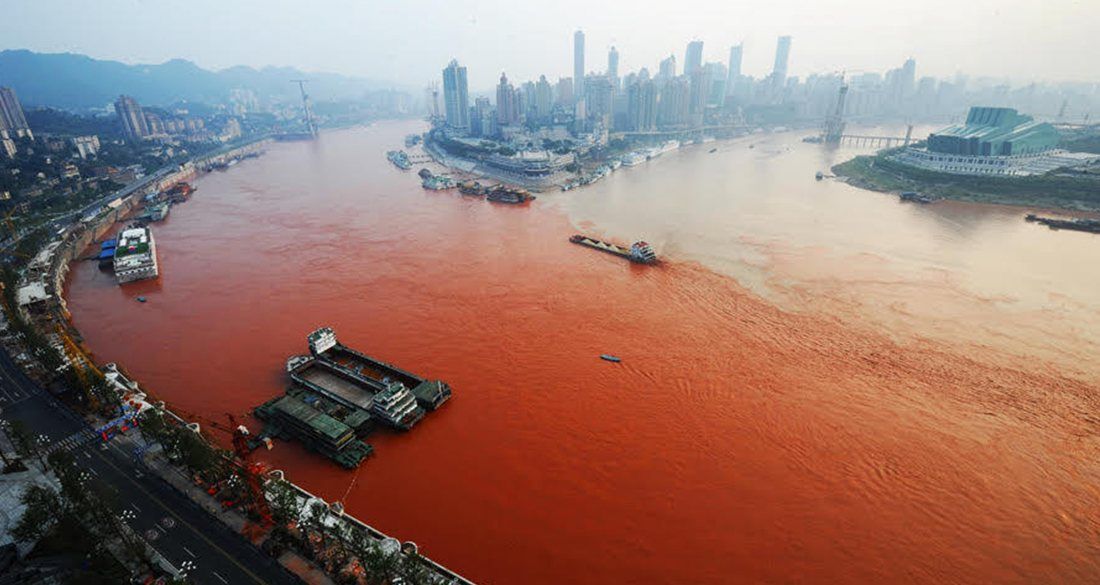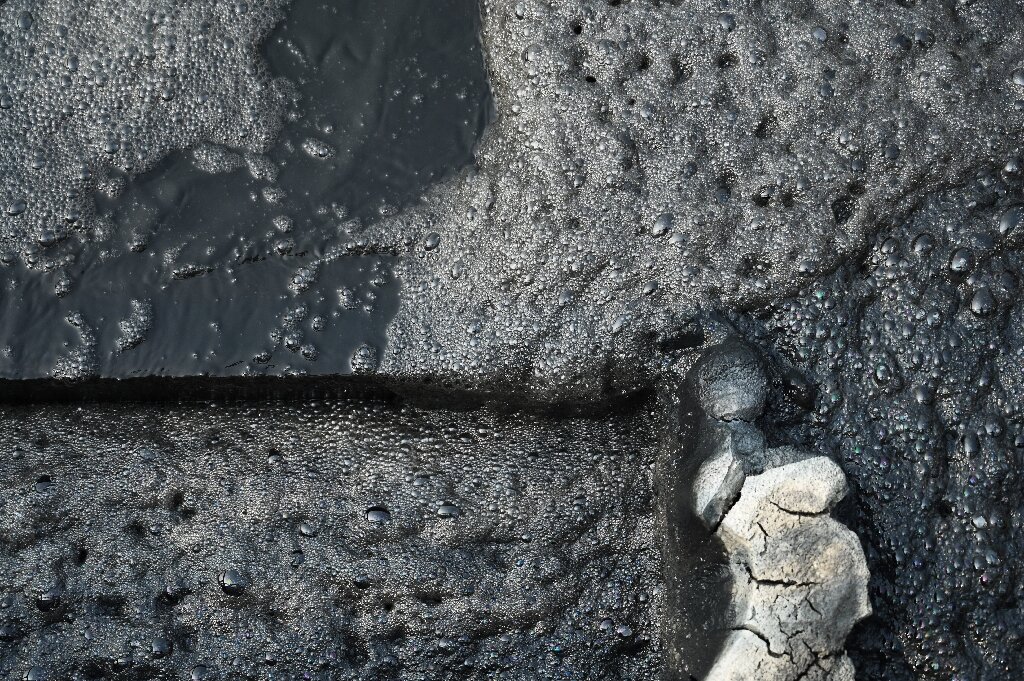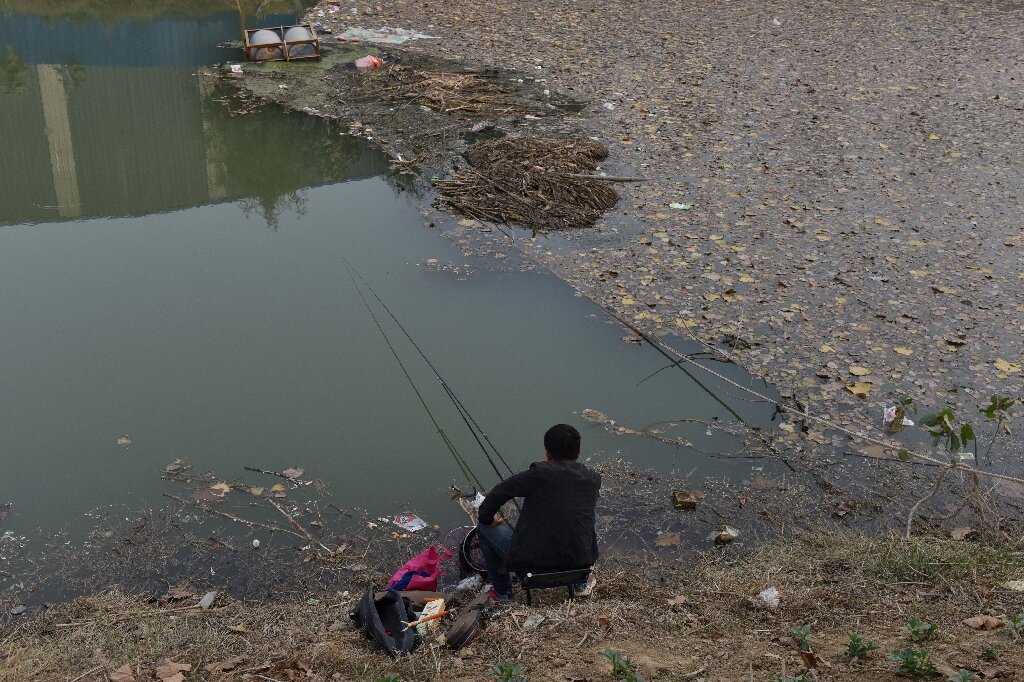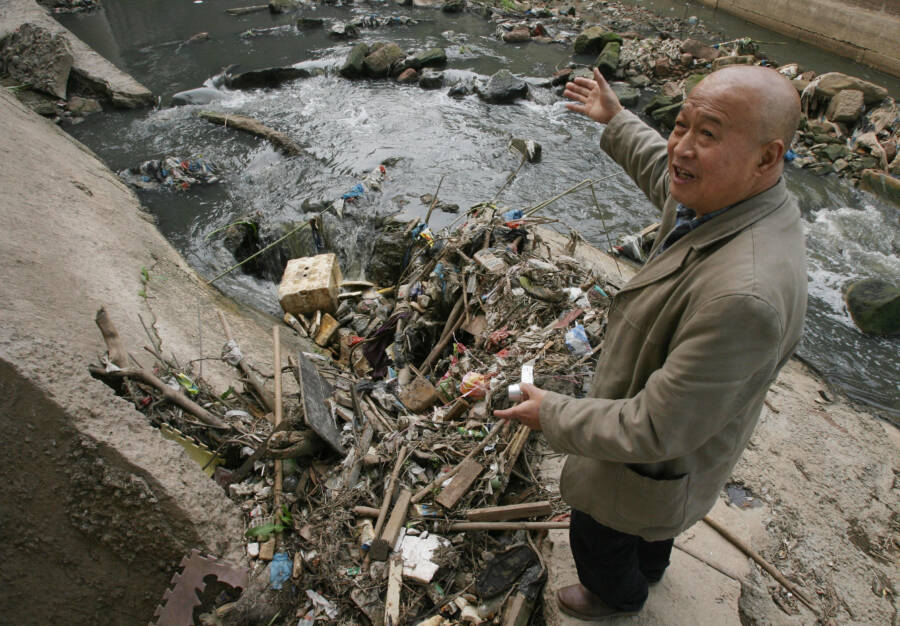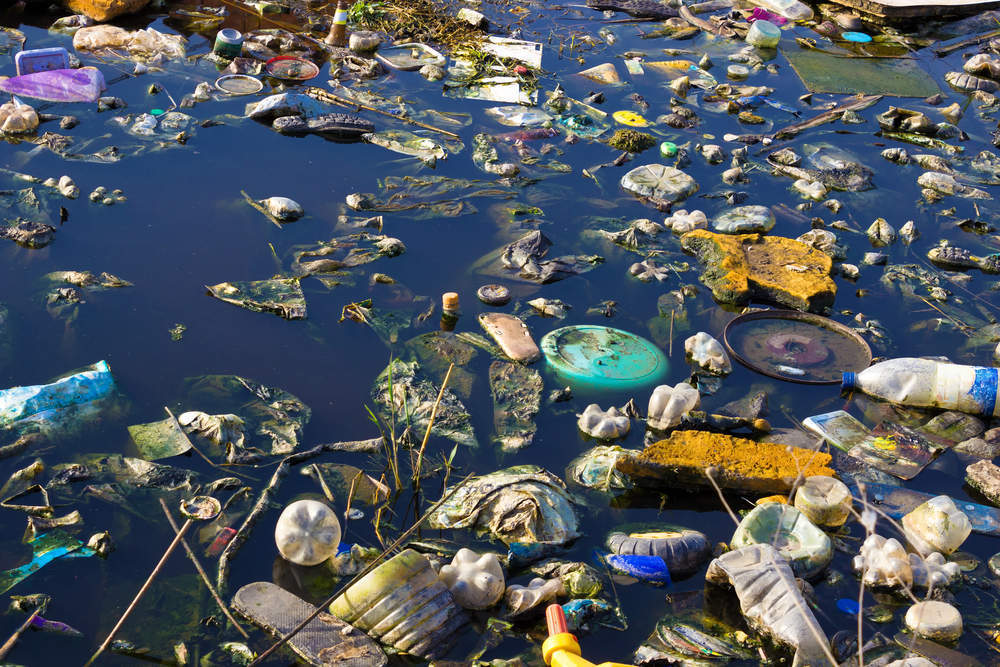Problems
The Yangtze River: A Source Of Life, And Now Death, For 400 Million Chinese Residents
The Yangtze is the first river in Eurasia in terms of length and fullness, and the third in the world. It crosses China from west to east, making a big bend to the south. It is the largest source of fresh water in China - 40% of its total reserves. It used to be a unique natural site with rich fauna and flora. China's Yangtze River is now so polluted that nearly half of the people who depend on it have no safe drinking water. It supports more than 400 million people and is unfortunately perhaps the most polluted river in the world, accounting for 55 percent of the material that ends up in neighboring seas and oceans. This amount of plastic has disastrous consequences for wildlife as well. Animals in areas surrounding the river have been found with microplastics in their stomachs, slowly killing them.
Major Environmental Problems of the Yangtze
Over the past fifty years, the environmental situation around this river has reached a critical point. The main cause of pollution in the Yangtze River is industrial, domestic, and municipal wastewater discharges. Located along its banks are: ● about 400 chemical plants; ● major oil refineries - seven; ● steel mills - five; ● The world's largest concrete Three Gorges Dam; ● cities and other population centers; ● agricultural fields. All of these facilities continuously pollute the water. A total of 600 kilometers of the river in different sections are in critical condition. Thirty percent of the tributaries of the Yangtze are also heavily polluted.
Pollution by solid waste
In addition to liquid waste, solid trash also enters the river. There are places where it forms entire islands. Most of the trash is made up of ubiquitous plastic.
Shipping
Shipping takes a great toll on the river. In particular, fuel gets into its waters. Dangerous goods transported on the river also often get into it. They are: ● oil; ● toxic substances; ● fuel oil; ● liquefied gas; ● gasoline; ● alcohol, etc. Some of these substances are dissolved in the water, making them dangerous to consume. According to environmentalists, more than 14 billion tons of liquid waste is discharged into the Yangtze each year, accounting for almost 42% of the country's total.
Problems with forests
Forests, of which there are already few in China, are actively being cut along the banks. This further worsens the ecological situation on the river, in particular, leading to the washout of soil into it. The natural balance of flora and fauna is also lost.
The catastrophic drinking water situation
For the most part, the Yangtze Basin is the only source of drinking water. Not to make matters worse, Chinese authorities claim the water from the river is drinkable. But ecologists and physicians disagree. It is not without reason that the number of cancers is increasing among residents who drink Yangtze water.
The destruction of nature
The pollution of the river is doing irreparable harm to China's natural resources. Rare animals, including endemics, are dying out. For example, there are no more Chinese river dolphins. It is the turn of the Chinese alligators, Chinese paddlefish, and Korean sturgeons. The situation of the river is such that it may repeat the sad fate of the Huang He, which has now become a seasonal river: its channel fills up only during floods, and during the rest of the year it is dried up. Yangtze means blue river. Once upon a time, it was. Today, most of its waters are dirty and devoid of life. A little more and it can no longer be restored.
Gallery
7Timelines
2023
October
Xi, general secretary of the Communist Party of China Central Committee and chairman of the Central Military Commission, learned about the enterprise's efforts to build green and intelligent factories as well as promote energy conservation, and reduce pollution and carbon emissions. The company, situated near the Yangtze River, is the largest petrochemical firm in the province. It has invested in nearly 30 projects to mitigate pollution and propel green transformation. Reducing pollution from chemical companies along the Yangtze River is key to advancing the environmental management of the river, Xi said. He called for continuous efforts on pollution control at the source and the whole-process reduction of pollution and carbon emission, as well as the promotion of digital and intelligent transformation and green transition to build the company into the world's leading green intelligent refining and chemical enterprise. While chemical firms like Sinopec Jiujiang Company have been economic drivers for many cities along the river, they also posed significant environmental challenges. Chongqing Municipality at the upper reaches of the Yangtze River, which was plagued by industrial waste, sand mining and vessel emissions. Water quality deteriorated, while lakes and wetlands were drying up. Central China's Hubei, the province with the longest Yangtze River passage, took the initiative to ensure that there would be no chemical firms within 1 kilometer of the river. Hubei has seen the total revenue of its chemical industry reclaim the top spot in central China after transformation and upgrading. Jiangsu's Changzhou City, having removed all low-end chemical firms along the shore to make space for greening and emerging industries, saw its new energy sector boost industrial output growth by 9 percentage points in the first seven months of 2023. Chemical firms greened the shoreline they vacated, and waters are now lucid. Official data showed that the proportion of surface water of fairly good quality -- at or above Grade III in the country's five-tier water quality system -- within the Yangtze River Economic Belt rose to 96.8 percent in the first half of 2023. The population of the Yangtze finless porpoises, a barometer of water quality in the Yangtze River basin, had increased.
March 01
To prevent and control pollution from ships in the Yangtze River, the Shanghai Municipality and Jiangsu Province have enforced new regulations which came into effect from 1st March 2023. The applicable waters of Shanghai Regulations shall be the navigable waters of Shanghai and the port waters under state-authorized management. The applicable waters of Jiangsu Regulations shall be the Yangtze River Waters in Jiangsu Province, which refers to the Yangtze River mainstream waters, including mainstream bypaths, short-cut routes and its connecting harbor basin waters. The new regulations refer to: ● Use of shore power ● Bunker quality standards ● Transfer of bulk liquid cargo ● Transfer of cargoes that emit toxic and harmful gases or dust ● Shipboard emergency plan ● Ballast water discharge ● Discharge of washing water and residues from EGCS ● Maintenance of the machinery And the prohibition on: ● Discharge of untreated sewage and oily water ● Sounding of ship whistle ● Use of incinerators ● Venting of toxic fumes
2022
August 22
A record-breaking drought has caused some rivers in China – including parts of the Yangtze – to dry up, affecting hydropower, halting shipping, and forcing major companies to suspend operations. The drought has affected at least 2.46 million people and 2.2m hectares of agricultural land in Sichuan, Hebei, Hunan, Jiangxi, Anhui, and Chongqing.
2021
December 17
The World Bank's Board of Executive Directors approved a US$400 million loan to help enhance ecological protection and reduce water pollution in China's Yangtze River basin. This financing complements more than $6 billion of China's resources and will help reduce water pollution from plastics and animal manure and improve wastewater treatment.
2020
October 01
Protecting the Yangtze—which irrigates an area responsible for 45 percent of the country's GDP—is now a priority, with President Xi Jinping calling for an end to "destructive" development along it.
2018
April 18
Of the 2.75 million metric tonnes of plastic waste deposited into the ocean by rivers each year, 1.5 million, or 55%, flows out of the Yangtze. This figure is according to a study led by Christian Schmidt, a hydrogeologist at the Helmholtz-Centre for Environmental Research, which was recently published in the Environmental Science & Technology journal. The study concluded that long rivers with large populations living nearby in countries with poor waste management tend to deposit the most plastic pollution. China is a prime example of this. As a result, there is a plastic concentration of 4,100 particles per cubic meter at the Yangtze river’s mouth according to the Dutch research group Ocean Cleanup.
2015
August 05
According to a recent report by the Economic Information Daily, citing the latest data from the Yangtze River Water Protection Committee, the volume of polluted water in the river has exceeded 33.9 billion tons. Every year, the pollution of the river increases by two percent.
March 15
A cargo ship had an accident that released 100 kilograms of styrene into the river. Two water treatment plants downstream, supplying water to the cities of Wuxi and Changzhou, ceased operation. Residents were forced to buy bottled drinking water.
2014
December 25
China's Ministry of Environmental Protection said that there are at least 400,000 chemical plants, five large steel production complexes, and seven powerful oil refineries operating along the banks of the Yangtze.
